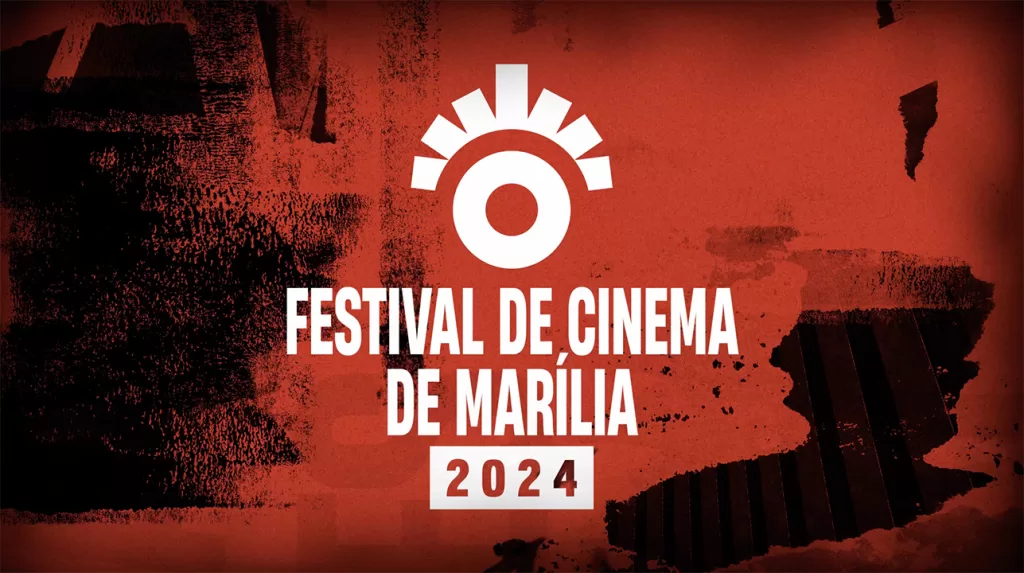ALUF Pictures is a film production company specializing in Motion Graphics and 3D animation. We create films from scratch, developing the script, art direction, voiceover, animations, and soundtrack. But do you know what our creative process looks like?
In this article, see how Alef Rodrigues organizes this entire process.
Each project type has a different structure. As an example, let’s look at the promotional film we created to publicize the Marília Film Festival 2024.
In this film, the Marília Film Club hired Estevão Garrido to handle the Art Direction for the festival’s publicity campaign and provided us with the promotional poster in a .psd Photoshop file.
With the file in hand, we analyzed all the information, studied the concept, visual elements, and relevant information, and moved on to writing the script.
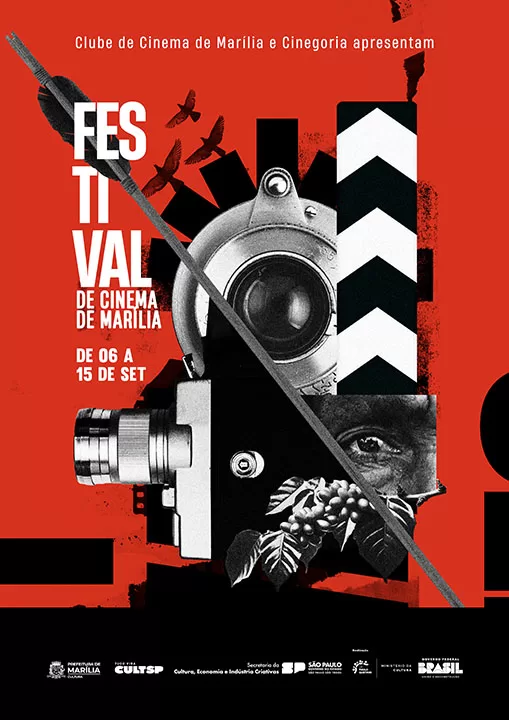
Master Scene Script
In the 1940s, Hollywood established the Master Scene script format, which simplifies the narrative by focusing on location, scene description, and dialogue.
This format proved very useful for everyone involved in audiovisual projects. It enables a clear visual of the film before beginning the actual production process, which is the most costly and time-consuming stage in audiovisual work.
That’s why we use this format here at ALUF. With a tight deadline, this format made the process faster and more efficient, facilitating understanding not only among the team but also with the Marília Film Club.
Here’s the production script we sent for the Marília Film Club’s approval.

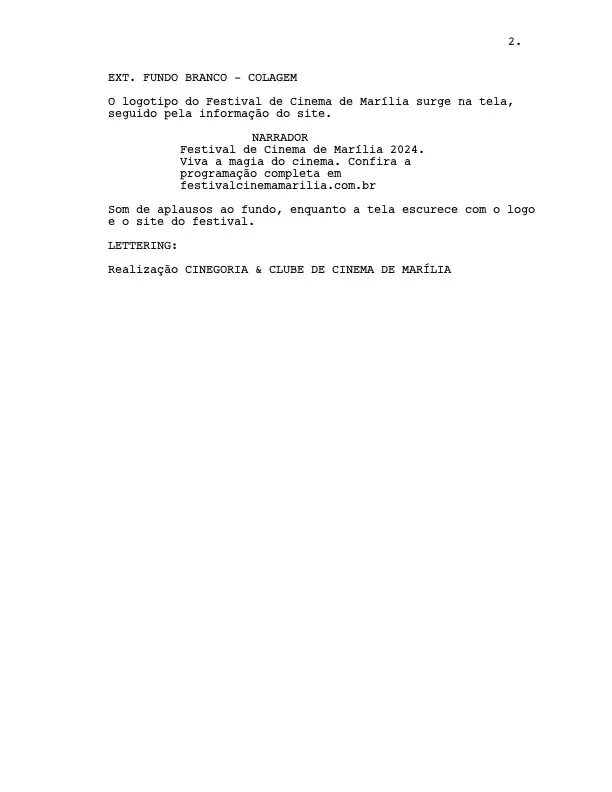
Starting the Motion Graphics
With the script approved, we began the process of breaking down the graphic elements.
We opened the Photoshop file and prepared the visual elements for animation. For the camera lens, for example, we separated it into three layers: the first layer for the glass, which would remain static; the second layer for the middle ring, which would rotate to simulate focus adjustment; and the third layer for the lens base, where we filled in the gap left by the middle ring.
We separated the three birds into dedicated files and created two additional frames to simulate wing flapping in a loop. This way, we could later animate their position in After Effects to make them appear as if they were flying.
We also exported the other visual elements into a project folder labeled ASSETS.
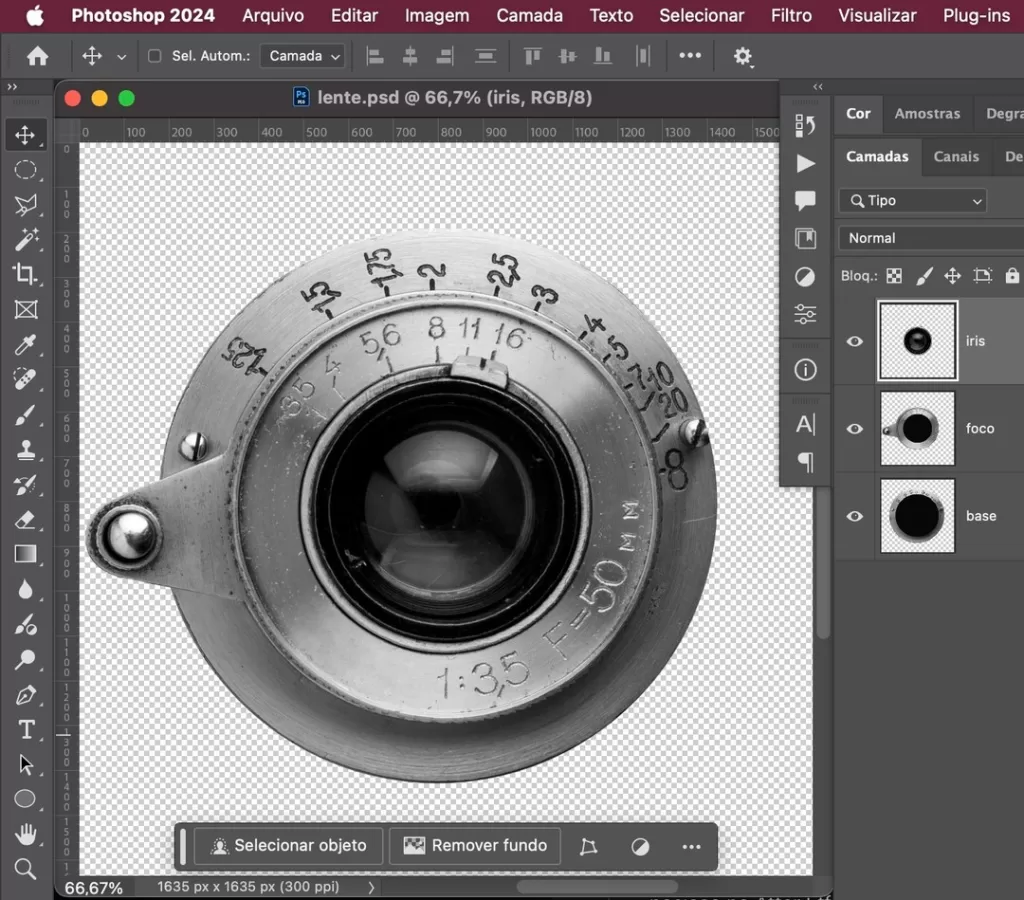
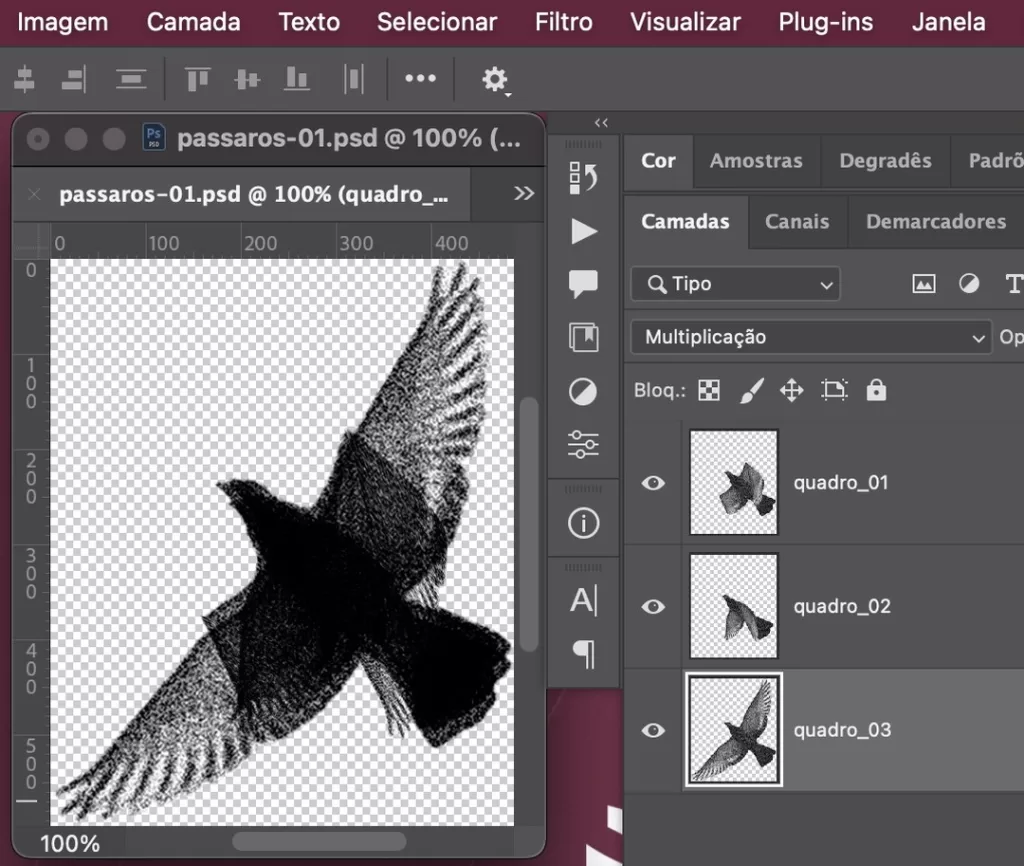
Organizing Files
Here, we can talk about our organizational structure for Motion Graphics project. Our folder structure starts with the project name, and within it, we create additional folders, such as:
- FCM24
- _documentos
- ASSETS
- AUDIO
- COMPOSITION
- FOOTAGE
- EXPORT
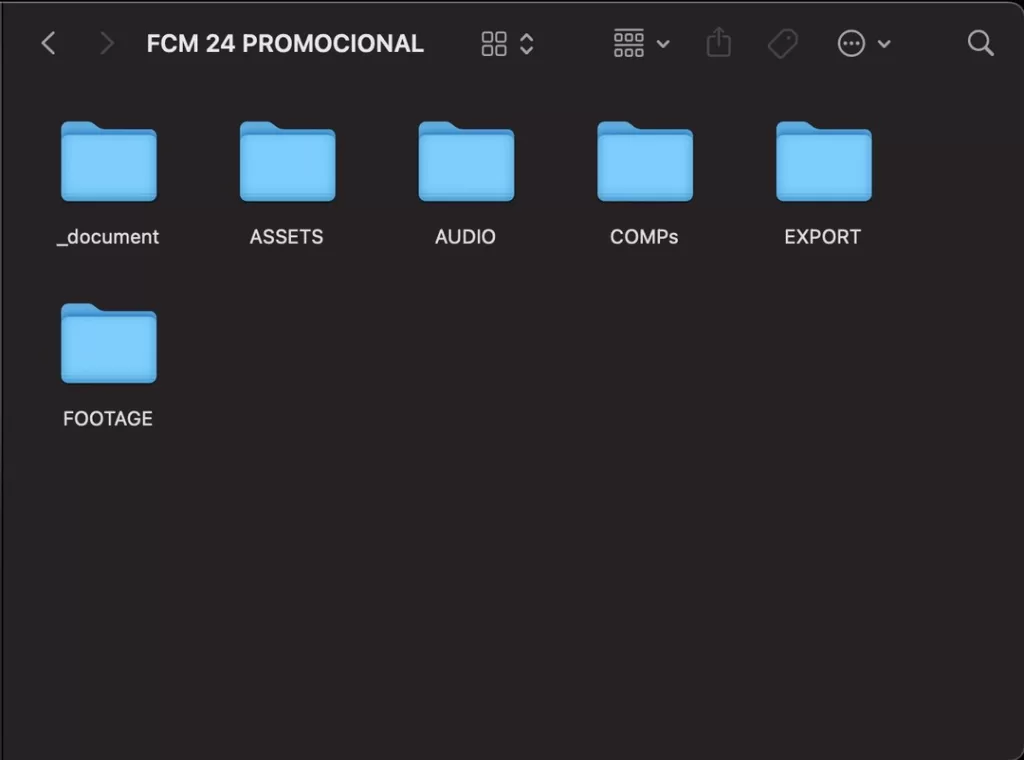
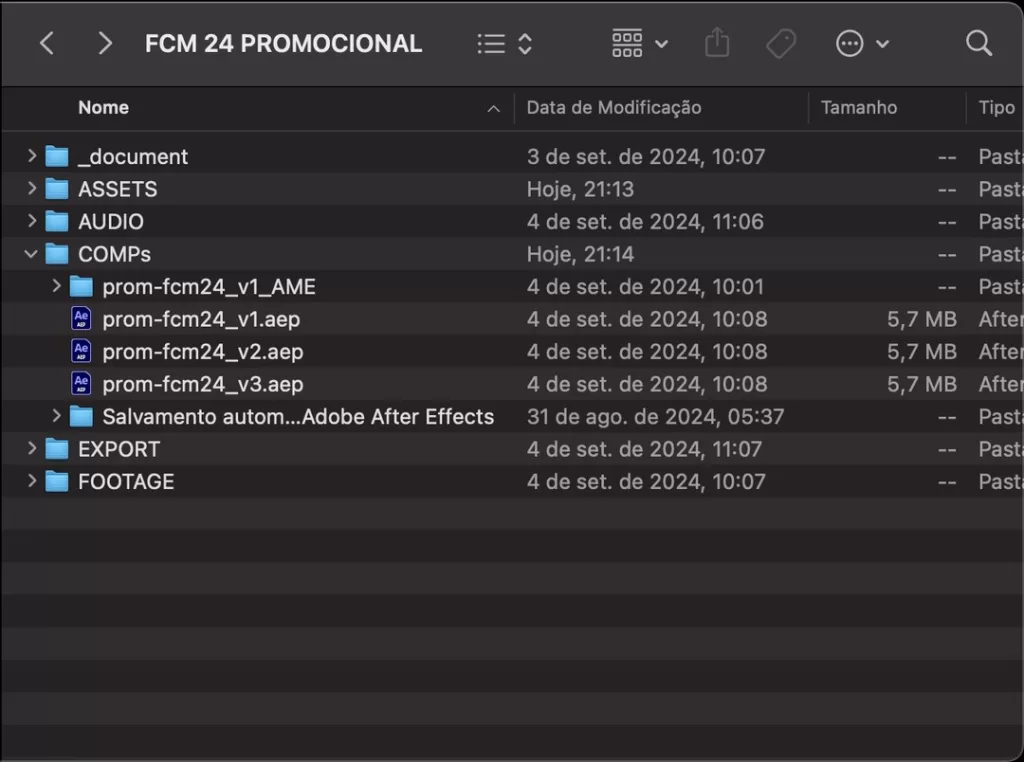
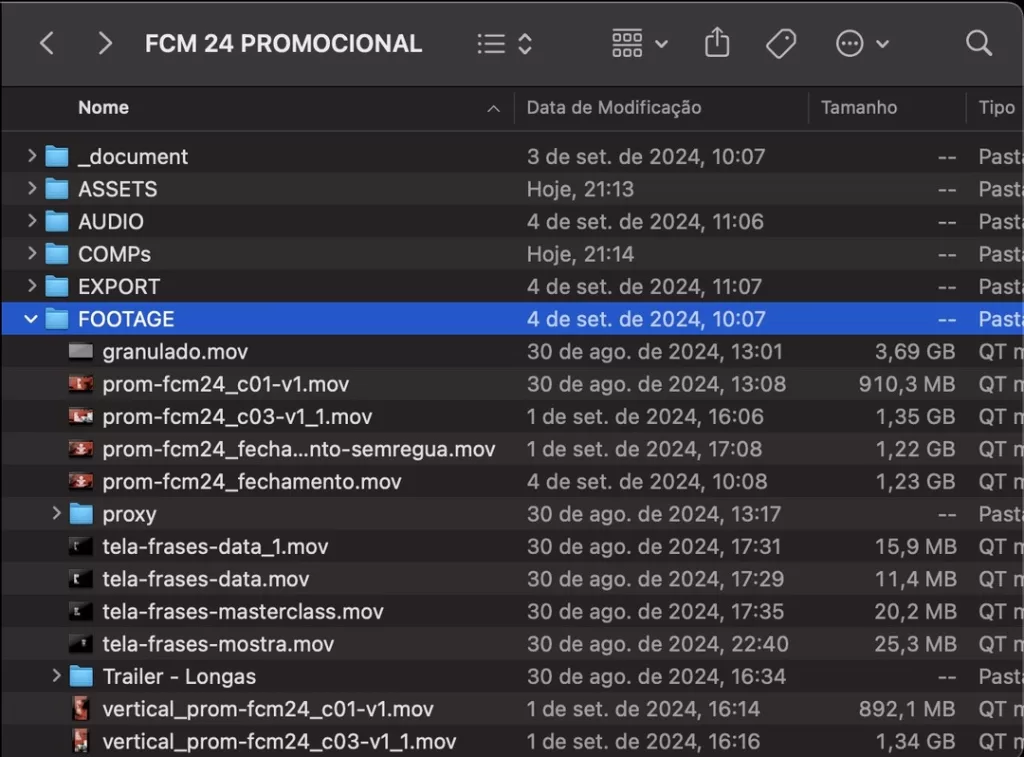
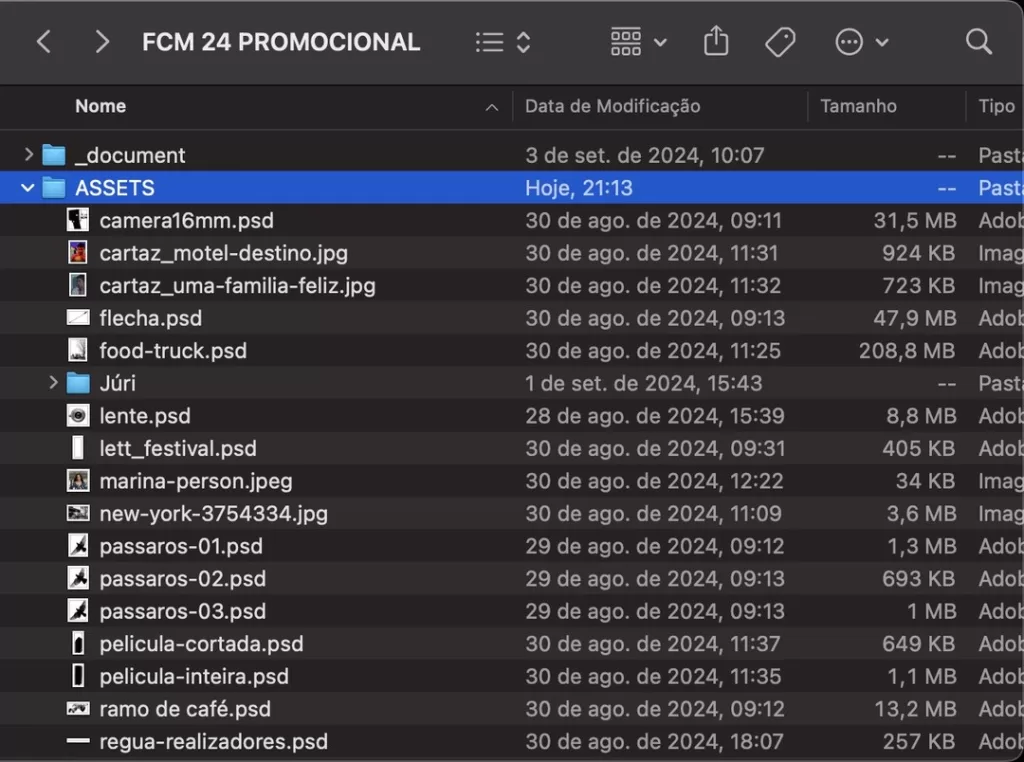
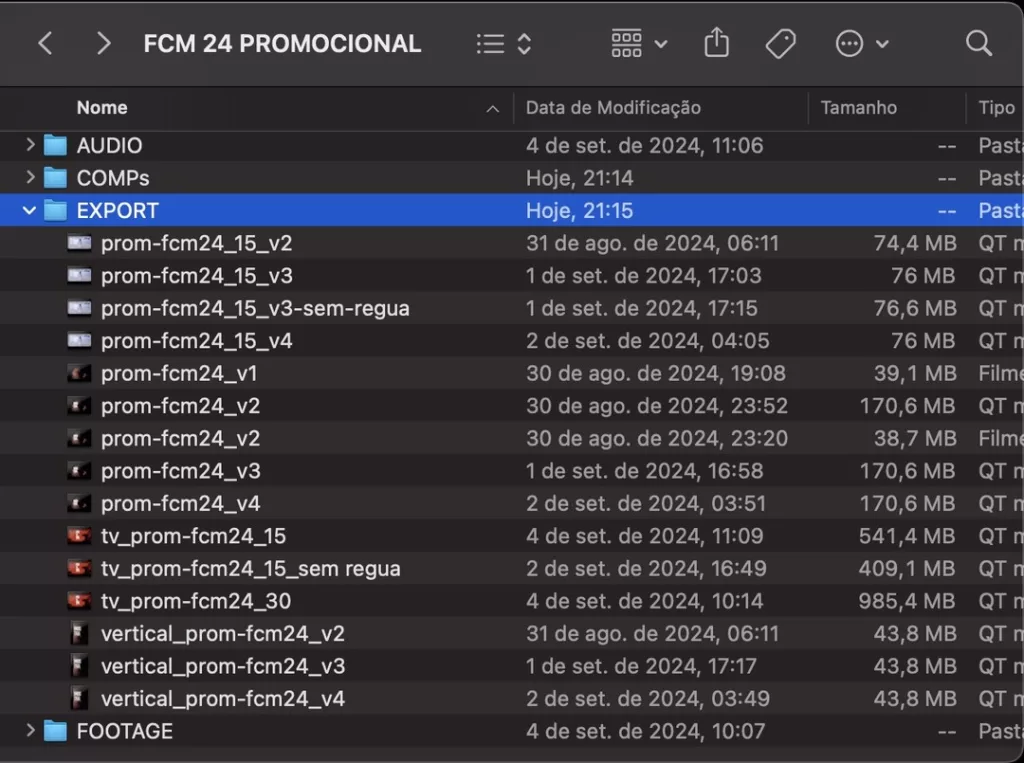
Animation and Editing
For this film, we used two software programs: After Effects for creating the animated scenes and DaVinci Resolve for assembling and mixing the final film.
The first step is to animate the scenes, without overly smooth movements, as the goal is to align the timing of the visual elements with the film’s voiceover. Next, we load all the basic material into the video editor along with the voiceover recorded by director Alef Rodrigues himself.
Since the film was broadcast on local TV, it needed to be exactly 30 seconds long.
With a rough version made, we moved on to refining the animations in each scene. The goal is to make the film visually stunning while ensuring the viewer’s attention is directed to each on-screen piece of information.
These scenes are then returned to the editor, who works on the soundtrack, adding music, Foley, sound effects, and mixing all these audio elements to create a pleasant result.
A vintage film grain layer was added to give the film a more interesting finish.
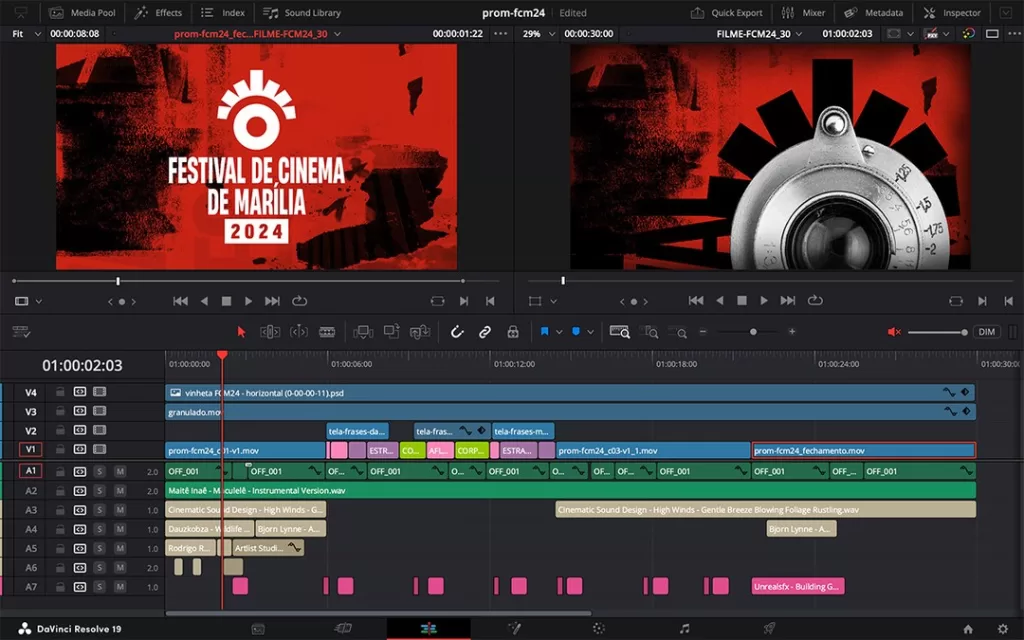
Approval and Distribution
After adjustments, changes, and adaptations, the film was approved in time and distributed across various digital and traditional media.
The festival took place in Marília, a city in the state of São Paulo, Brazil, with a rich program lineup. This was our second year producing the promotional film for the festival. Always an honor.
